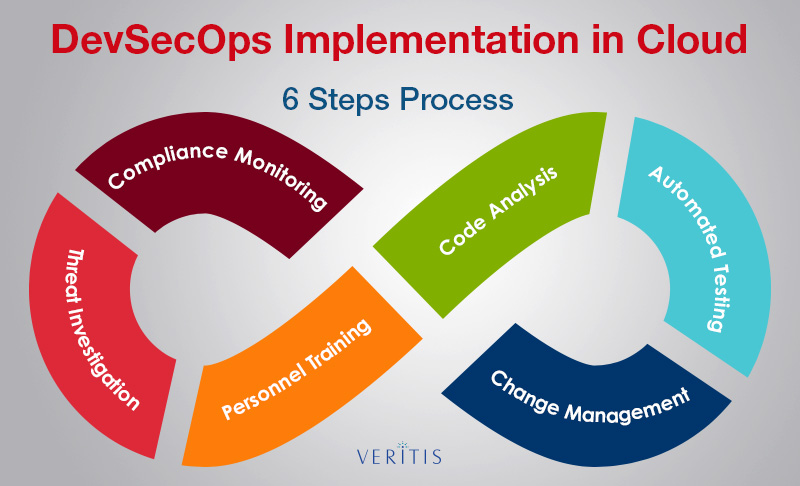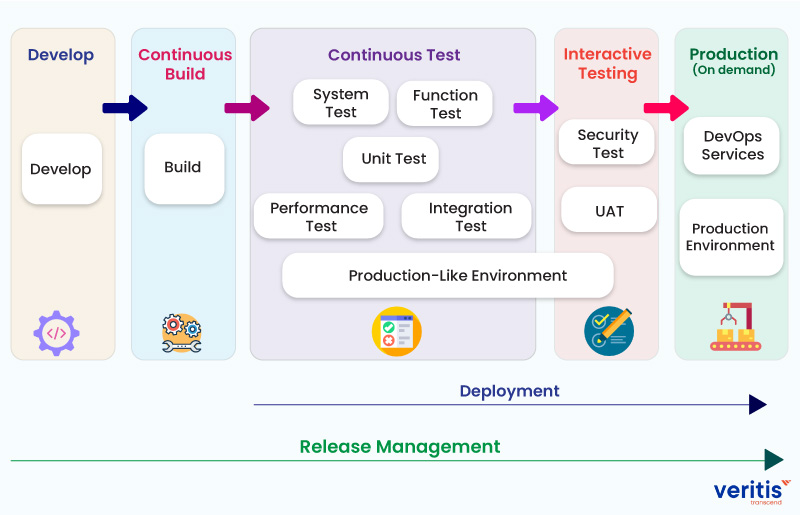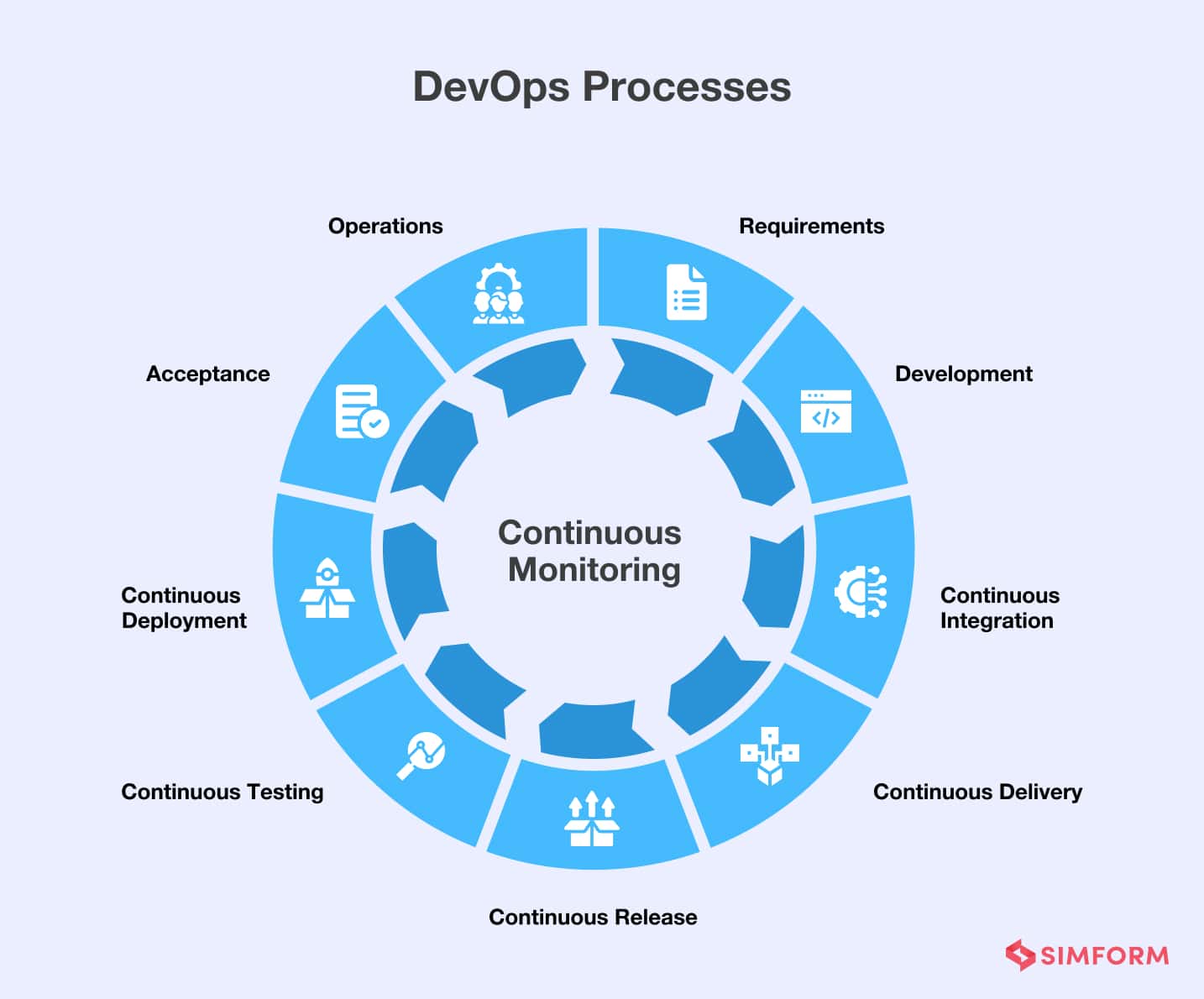What are DevOps Practices?
DevOps practices represent a modern approach to software development and operations, emphasizing collaboration, communication, and automation. By integrating development and operations teams, DevOps aims to streamline software delivery, enabling faster and more efficient releases. This approach is particularly valuable in cloud environments, where the dynamic nature of infrastructure and services demands agile and adaptable processes. Implementing DevOps practices in cloud environments allows organizations to leverage the full potential of cloud computing, ensuring consistent, secure, and high-performance applications.
The Role of Cloud Environments in DevOps
Cloud environments play a crucial role in implementing DevOps practices, offering a flexible, scalable, and on-demand infrastructure for modern software development and operations. By adopting cloud platforms, organizations can facilitate collaboration, automation, and continuous improvement, making it easier to embrace DevOps methodologies. Cloud environments provide several benefits that support the core principles of DevOps, including:
- Collaboration: Cloud platforms enable seamless collaboration between development and operations teams by providing a unified environment for development, testing, deployment, and monitoring. This collaboration reduces miscommunication, accelerates problem-solving, and promotes a culture of shared responsibility.
- Automation: Cloud environments support automation through APIs, SDKs, and various tools, allowing teams to automate repetitive tasks, such as infrastructure provisioning, code deployment, and testing. Automation reduces manual errors, accelerates processes, and ensures consistent and reliable results.
- Scalability: Cloud platforms offer on-demand scalability, allowing teams to quickly and easily scale resources up or down based on application needs. Scalability supports DevOps practices by enabling teams to respond quickly to changing requirements, test under various load conditions, and maintain high performance and availability.
By leveraging these benefits, organizations can create a robust DevOps environment in the cloud, streamlining software delivery, reducing time-to-market, and improving overall product quality.

Continuous Integration and Continuous Delivery (CI/CD)
Continuous Integration and Continuous Delivery (CI/CD) are integral DevOps practices that streamline software delivery in cloud environments. CI/CD aims to automate the software development process, from code integration to deployment, by implementing a series of stages and gates that ensure code quality, consistency, and reliability. Implementing DevOps practices in cloud environments significantly benefits from CI/CD, as it enables faster time-to-market, higher product quality, and improved collaboration between development and operations teams.
- Stages of CI/CD: The CI/CD pipeline typically consists of three stages: Continuous Integration (CI), Continuous Delivery (CD), and Continuous Deployment (CD). CI focuses on integrating code changes into a shared repository, automatically building and testing the application. CD involves preparing the application for deployment, while Continuous Deployment automates the release process, deploying the application to production upon passing all tests and gates.
- Popular CI/CD Tools: Some popular CI/CD tools for cloud environments include Jenkins, CircleCI, Travis CI, GitLab CI/CD, and GitHub Actions. These tools offer a wide range of features, such as integration with version control systems, container support, and parallel execution, making it easier to implement CI/CD pipelines in cloud environments.
- Best Practices: To ensure successful CI/CD pipeline implementation, consider the following best practices:
- Maintain a single source of truth for code changes.
- Implement automated testing and quality gates at each stage.
- Use version control for infrastructure and application code.
- Leverage containerization for consistent and isolated environments.
- Monitor and analyze pipeline performance to identify bottlenecks and areas for improvement.
By adopting CI/CD practices in cloud environments, organizations can significantly improve software delivery efficiency, reduce time-to-market, and ensure consistent and reliable application releases.

Infrastructure as Code (IaC)
Infrastructure as Code (IaC) is a key DevOps practice that revolutionizes cloud infrastructure management. IaC involves writing and managing infrastructure configurations using code, enabling version control, consistency, and automation of infrastructure management. By treating infrastructure as code, organizations can reduce errors, increase efficiency, and accelerate the delivery of cloud-based applications and services.
- Benefits of IaC: IaC offers several benefits, including:
- Version control: IaC enables version control for infrastructure, allowing teams to track changes, revert to previous configurations, and maintain a history of infrastructure modifications.
- Consistency: IaC ensures consistent infrastructure configurations across different environments, reducing configuration drift and potential errors.
- Automation: IaC automates infrastructure management tasks, enabling faster deployment, scaling, and updating of cloud resources.
- Auditability: IaC provides detailed documentation of infrastructure configurations, making it easier to audit and comply with regulatory requirements.
- Popular IaC Tools: Some popular IaC tools for cloud environments include Terraform, AWS CloudFormation, Azure Resource Manager (ARM) Templates, and Google Cloud Deployment Manager. These tools offer features such as infrastructure provisioning, change management, and collaboration, making it easier to implement IaC practices in cloud environments.
- Best Practices: To ensure successful IaC implementation, consider the following best practices:
- Use descriptive and self-explanatory naming conventions for resources.
- Implement modular and reusable infrastructure code.
- Leverage templates and modules for standard infrastructure components.
- Implement peer reviews and automated testing for infrastructure code.
- Monitor and track infrastructure changes using version control systems.
By adopting IaC practices in cloud environments, organizations can significantly improve infrastructure management efficiency, reduce errors, and ensure consistent and reliable cloud infrastructure configurations.
Monitoring and Logging
In cloud environments, monitoring and logging are crucial DevOps practices that ensure high availability, performance, and security. Real-time monitoring and logging help identify and resolve issues quickly, enabling teams to maintain a reliable and efficient cloud infrastructure. By collecting, analyzing, and acting on data from cloud resources, organizations can optimize their cloud environments and continuously improve their DevOps practices.
- Benefits of Monitoring and Logging: Monitoring and logging offer several benefits, including:
- Real-time visibility: Monitoring and logging provide real-time visibility into cloud resources, enabling teams to detect and address issues proactively.
- Performance optimization: Monitoring and logging help identify performance bottlenecks, enabling teams to optimize cloud resources and improve overall system performance.
- Security and compliance: Monitoring and logging support security and compliance efforts by tracking user activities, detecting anomalies, and providing detailed audit trails.
- Collaboration and communication: Monitoring and logging facilitate collaboration and communication among teams by providing a shared understanding of cloud infrastructure performance and issues.
- Popular Monitoring and Logging Tools: Some popular monitoring and logging tools for cloud environments include Prometheus, Grafana, ELK Stack (Elasticsearch, Logstash, Kibana), and CloudWatch. These tools offer features such as real-time monitoring, visualization, alerting, and log analysis, making it easier to implement monitoring and logging practices in cloud environments.
- Best Practices: To ensure successful monitoring and logging implementation, consider the following best practices:
- Define clear monitoring and logging objectives and metrics.
- Implement centralized logging and monitoring systems.
- Configure alerts and notifications for critical events and thresholds.
- Regularly review and analyze monitoring and logging data.
- Integrate monitoring and logging tools with other DevOps tools and processes.
By adopting monitoring and logging practices in cloud environments, organizations can significantly improve their DevOps practices, ensuring high availability, performance, and security for their cloud-based applications and services.

Planning and Preparation
Before implementing DevOps practices in cloud environments, it is crucial to plan and prepare adequately. A well-thought-out strategy ensures a smooth transition, addressing potential challenges and maximizing the benefits of DevOps practices. Here are essential steps to consider during the planning and preparation phase:
- Assess Current Infrastructure: Evaluate the existing infrastructure, tools, and processes to identify areas that require improvement. This assessment helps in understanding the current state of the organization’s DevOps maturity and setting realistic goals for the transformation.
- Identify Gaps: Determine the gaps between the current infrastructure and the desired DevOps-enabled cloud environment. These gaps may include a lack of automation, inadequate collaboration, or insufficient monitoring and logging. Identifying these gaps will help prioritize improvements and allocate resources effectively.
- Set Clear Goals and Objectives: Define specific, measurable, achievable, relevant, and time-bound (SMART) goals and objectives for the DevOps transformation. Clear goals ensure that all stakeholders understand the expected outcomes and can track progress throughout the implementation process.
- Establish a Cross-Functional Team: Assemble a cross-functional team consisting of representatives from development, operations, security, and other relevant departments. A diverse team promotes collaboration, encourages different perspectives, and ensures that all aspects of the DevOps transformation are considered.
- Develop a Roadmap: Create a detailed roadmap outlining the steps, milestones, and timeline for implementing DevOps practices in cloud environments. A roadmap provides a clear path for the transformation, enabling teams to stay focused and aligned with the overall strategy.
By following these planning and preparation steps, organizations can set a solid foundation for implementing DevOps practices in cloud environments, ensuring a successful and efficient transformation process.

Execution and Adoption
Implementing DevOps practices in cloud environments requires careful planning and execution. By following a structured approach and addressing potential challenges, organizations can successfully adopt DevOps methodologies and unlock the full potential of cloud environments. Here is a step-by-step guide to help you execute and adopt DevOps practices:
- Choose the Right Cloud Provider: Select a cloud provider that supports DevOps practices and offers a wide range of services and tools. Popular cloud providers include Amazon Web Services (AWS), Microsoft Azure, and Google Cloud Platform (GCP).
- Implement CI/CD Pipelines: Set up Continuous Integration and Continuous Delivery (CI/CD) pipelines to automate the software delivery process. Popular CI/CD tools include Jenkins, GitLab CI/CD, and CircleCI. Ensure that your CI/CD pipelines are secure, scalable, and efficient.
- Adopt Infrastructure as Code (IaC): Implement IaC using tools like Terraform, CloudFormation, or Azure Resource Manager. IaC enables version control, consistency, and automation of infrastructure management, reducing errors and increasing efficiency. Ensure that your IaC templates are well-documented, version-controlled, and tested regularly.
- Establish Monitoring and Logging Practices: Implement real-time monitoring and logging solutions to identify and resolve issues quickly. Popular monitoring and logging tools include Prometheus, Grafana, ELK Stack, and CloudWatch. Ensure that your monitoring and logging practices align with your organization’s security and compliance requirements.
- Promote Collaboration and Communication: Encourage collaboration and communication between development, operations, and other relevant teams. Implement tools and practices that support cross-functional teamwork, such as agile methodologies, pair programming, and regular stand-up meetings.
- Provide Training and Support: Offer training and support programs to help your team members adapt to new DevOps practices and tools. Encourage continuous learning and skill development to ensure that your team remains up-to-date with the latest DevOps trends and best practices.
- Measure Success and Iterate: Define key performance indicators (KPIs) to measure the success of your DevOps implementation. Regularly review your KPIs, gather feedback, and make data-driven decisions to optimize processes and workflows. Continuously iterate and improve your DevOps practices based on your organization’s unique needs and goals.
By following these steps, organizations can successfully execute and adopt DevOps practices in cloud environments, reaping the benefits of faster and more efficient software delivery, improved collaboration, and increased innovation.

Continuous Improvement
Implementing DevOps practices in cloud environments is an ongoing process that requires continuous improvement. By measuring success, gathering feedback, and making data-driven decisions, organizations can optimize their DevOps practices and workflows, ensuring they remain effective and efficient. Here are some strategies for continuous improvement in DevOps practices:
- Define Key Performance Indicators (KPIs): Establish a set of KPIs to measure the success of your DevOps implementation. KPIs may include deployment frequency, lead time for changes, mean time to recovery, and change failure rate. Regularly review your KPIs to identify areas for improvement and track progress over time.
- Gather Feedback: Encourage open communication and feedback from your team members and stakeholders. Solicit input from different perspectives to gain a holistic understanding of your DevOps practices and identify potential areas for improvement. Consider implementing feedback mechanisms such as surveys, retrospectives, or suggestion boxes.
- Conduct Regular Reviews: Schedule regular reviews of your DevOps practices, tools, and workflows. Use these reviews as opportunities to identify inefficiencies, redundancies, or gaps in your processes. Document your findings and use them to inform your continuous improvement efforts.
- Implement Data-Driven Decisions: Leverage data and analytics to inform your continuous improvement efforts. Use tools like A/B testing, multivariate testing, or statistical analysis to evaluate the impact of changes to your DevOps practices. Make data-driven decisions to optimize processes and workflows, ensuring that your improvements are grounded in evidence and not assumptions.
- Stay Up-to-Date with Industry Trends: Continuously monitor industry trends and best practices in DevOps and cloud environments. Attend conferences, webinars, or workshops to stay informed about the latest developments and innovations. Adopt new tools, practices, or methodologies that align with your organization’s goals and values.
- Foster a Culture of Continuous Learning: Encourage a culture of continuous learning and skill development within your organization. Provide opportunities for team members to attend training, workshops, or certifications. Encourage experimentation, prototyping, or proof-of-concept initiatives to test new ideas and approaches.
By implementing these strategies, organizations can foster a culture of continuous improvement in DevOps practices, ensuring that they remain effective, efficient, and aligned with their goals and objectives. Continuous improvement is an essential aspect of DevOps, enabling organizations to unlock the full potential of cloud environments and stay ahead of the competition.
Conclusion: Unlocking the Potential of Cloud Environments with DevOps Practices
Implementing DevOps practices in cloud environments is a powerful strategy for organizations seeking to accelerate software delivery, reduce errors, and increase efficiency. By bridging the gap between development and operations teams, DevOps enables faster and more efficient software delivery, ultimately unlocking the full potential of cloud environments.
To successfully implement DevOps practices in cloud environments, it is crucial to follow a structured approach that includes planning, preparation, execution, and continuous improvement. This approach ensures that organizations can assess their current infrastructure, identify gaps, set clear goals and objectives, and adopt DevOps practices systematically.
When implementing DevOps practices in cloud environments, it is essential to leverage key DevOps practices such as Continuous Integration and Continuous Delivery (CI/CD), Infrastructure as Code (IaC), and Monitoring and Logging. These practices streamline software delivery, enable version control, consistency, and automation of infrastructure management, and help identify and resolve issues quickly, ensuring high availability and performance.
Moreover, continuous improvement is a critical aspect of DevOps practices. By measuring success, gathering feedback, and making data-driven decisions, organizations can optimize their DevOps practices and workflows, ensuring they remain effective and efficient. Continuous improvement enables organizations to stay ahead of the competition and unlock the full potential of cloud environments.
In conclusion, implementing DevOps practices in cloud environments is a powerful strategy for organizations seeking to accelerate software delivery, reduce errors, and increase efficiency. By following a structured approach, leveraging key DevOps practices, and emphasizing continuous improvement, organizations can unlock the full potential of cloud environments and achieve their business objectives.
